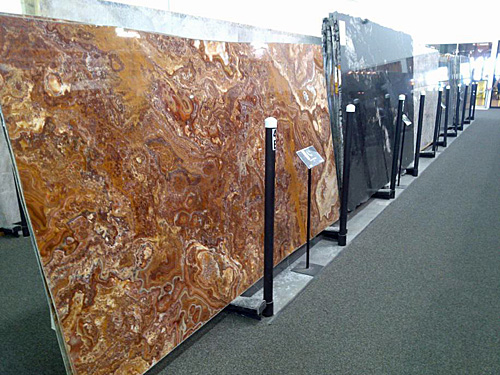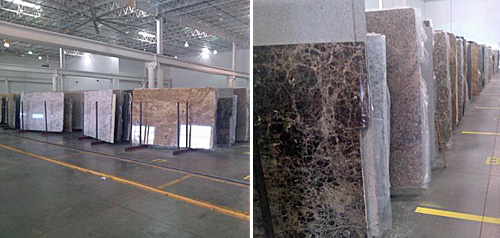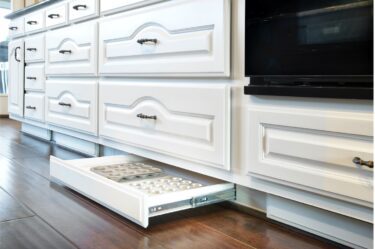When I’m asked about the best product to use for countertops, I always recommend granite. Granite is very durable, and the long-lasting quality and timeless beauty of the natural stone make it a smart investment for both bathroom and kitchen countertops.
Here are the 10 most frequently asked questions about granite:
- Isn’t granite expensive? Surprisingly, no. The cost of plastics and vinyl has risen quite a bit in the last few years, while the granite marketplace has stayed very competitive. Many times granite is one of the least expensive ways to go. Another thing to consider is that granite will maintain its beauty and structure much, much longer than man-made products.
- Does granite require much maintenance? No. The granite is sealed when it is fabricated. Simply use granite cleaner that also has a sealer in it a few times per year. Spot clean with hot water. Use mild soap sparingly; it will leave a residue that can build up, so rinse well with hot water. Avoid acidic cleaners, they will break down the sealer and make it look dull.
- Granite is rock hard, will it cause my dishes to break and chip? It’s true that granite doesn’t flex and give like man-made products, but with normal care, it isn’t a problem. When it comes to dish handling, I’m as big a klutz as there is, and I don’t have any issues breaking or chipping dishes on my granite countertop.
- Can I use the granite top as a cutting board? You could, it wouldn’t harm the granite, but it sure will dull your knife, and you are spreading food and germs on the countertop. It’s best to use a cutting board.
- Should I use hot pads under pans and plates when setting them on the granite? Yes. Although unlikely, the heat shock could potentially create a stress crack. The real reason to use hot pads is to prevent anything trapped on the bottom of a pan from scratching the surface. Also, the granite will pull the heat from a plate surprisingly fast, so a hot pad helps keep the dish warm longer.
- What thickness of granite should I get? Granite comes in 2 centimeter (about ¾”), and 3 centimeter (about 1 ¼”) thicknesses. I only recommend the 3 centimeter. The 2 centimeter is prone to crack and in my opinion, the thin edge has a cheap look to it. The savings is very minimal, and not worth it in the long run.
- How is granite priced? Granite is priced by the square foot in levels—level 1, level 2, level 3, etc. The higher the level, the higher the price. Most of the granite we sell is level 1. There are around 12 different selections, and most of the time one will work. Higher levels of granite cost more, but it’s because they are rarer—it has nothing to do with quality. In fact, the higher-priced and more exotic granite can sometimes be more prone to problems.
- Why don’t the samples look like the granite I received? Granite is an organic material and no two slabs are alike. This is actually one of the great things about granite, as yours will be unique. This is why we have our clients go to the granite warehouse and pick their slab of granite. Often, the client will see a veining or coloration they like within a slab and we will make sure it is featured when the tops are cut.
- What kind of sink should I use? Your sink can be under-mounted or top-mounted. I prefer the under-mount because it does away with the nasty grimy edge when a sink sits on top of a counter. My favorite sink is a granite composite sink. Check them out at blancoamerica.com.
- Where can I see granite slabs? My favorite granite warehouse is IMC in Fort Worth. They have a huge inventory of beautiful granite from all over the word, and a very helpful and knowledgeable staff. Even if you aren’t currently in the market for granite, it’s worth the field trip to see these awesome natural works of art.
Let me know if you have any other granite questions, or would like an in-home consultation with one of our design estimators.
Take care,
Mike









